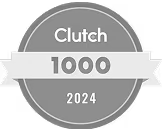About the client
Plania is a company which develops, sells and implements Plania Facility Management System. Their clients are mostly big corporations dedicated to the real estate and factory management. They work mainly on the Norwegian market, where they’re the leading company with over 200 installations, but they also have some clients from other countries.
From the first contact to the signing of the contract

The client contacted us at the beginning of November 2013. Requirements weren’t established yet, we only had the initial project scope and the information that the active support and consultations are expected from us, similarly to the last time we worked together (we previously cooperated on the Inlead project).
Shortly after that the client prepared the first list of requirements which were the starting point for our preliminary work. We proceeded to analyze the market and in the meantime we worked on further details of the project.
We weren’t the only company invited to the take on the project. The fact that we previously worked on similar project was undoubtedly our advantage, but we also got signals that there are some concerns regarding our company among the people involved in the project on the client’s side. These were mainly:
- uncertainty related to the cooperation with a company outside of the region (Norwegians prefer to work with local providers);
- usage of open-source technologies in the project (Plania favors solutions signed by Microsoft).
In order to dispel these doubts we conducted a series of actions:
- we scheduled online meeting, during which we presented our company, suggested solutions and the offer. We also booked some time for open discussion so that the client-side stakeholders could ask further questions regarding our offer;
- during the final stage of the discussions we agreed to sign the contract based on the template used in Norway (prepared by Difi – The Agency for Public Management and eGovernment);
- we arranged a meeting in our office, during which we directly discussed objectives of the project and details of the contract;
After a few months of negotiations and finalizing the requirements we received the information that we were chosen to carry out this project. The contract was signed at the beginning of June 2014 (almost 7 months after we were contacted by Plania) and we got down to work.
Aims of the project
The old website was outdated, divergent with the current branding of the company and was lacking information about products.
The aims of the new website were to clearly communicate the company's vision and provide customers with comprehensive information about offered products and benefits they provide. It was also important to meet the customers’ needs regarding the accessibility on mobile devices. In addition, the website was to provide Plania with:
- The ability of converting the visitors into identified leads;
- The support for marketing events and the selling process.
Backend technology selection

Process of selecting a proper backend technology lasted quite a bit. In the beginning, based on initial assumptions, we suggested Drupal. Ultimately, the final offer included two proposals, giving the client a possibility of choosing between Drupal and Django. Our analysis confirmed that both solutions are suitable for this project. It turned out that implementations of planned functionalities in Django was in this case cheaper and less time-consuming. After reviewing the offer and the demonstrative version of the administration panel in both technologies, the client chose Django.
Project development
During the project we have prepared:
- clickable prototype in Axure: developed during 10 iterations;
- graphic design (RWD): we created 26 desktop views and 14 views for lower resolutions;
- HTML/CSS/JS: coded in line with the RWD approach;
- CMS: based on Django Framework.

Few functionalities that we implemented:
- full responsiveness in 320-1280px range;
- various content types (e.g. events, products, case study, text pages);
- menu and categories management;
- search engine based on Solr;
- content association executed via Solr;
- possibility of setting the moment when content is published and unpublished;
- changes history that allows to restore previous versions of the entry;
- blog with Disqus-based comments;
- informative materials with the possibility of limiting access to logged-in users only;
- multilingualism;
- integration with Salesforce CRM platform in order to provide an easy identification of leads;
We also worked on the separate mini-project which purpose was to develop interactive microsites. These microsites were to present the course of two processes (Operation and Maintenance and Contract Management). Both had their own graphic design prepared, appropriate illustrations drawn and the whole was coded in HTML/CSS/JS with the possibility of the descriptions management via website’s CMS.
Summary
New website was fully launched in April 2015. What’s really important for us is the fact we managed to fulfill all the requirements that were set before the start of the project. Our client finally has the website that is in tune with corporate branding and by which could inform users about new events or share materials with them. They also received the sales-supporting tool (clear presentation of products, interactive presentations of selected processes in the “one page” form or the queries integration with Salesforce CRM).
This project also showed that, in terms of both the development cost and the ease of administration panel usage, Django in many cases can be a solid alternative to standard CMS (like Drupal). Check out the realization of Plania in our portfolio!
Navigate the changing IT landscape
Some highlighted content that we want to draw attention to to link to our other resources. It usually contains a link .
.svg)

.webp)



.svg)
.svg)
.avif)

.avif)
.avif)
.avif)
